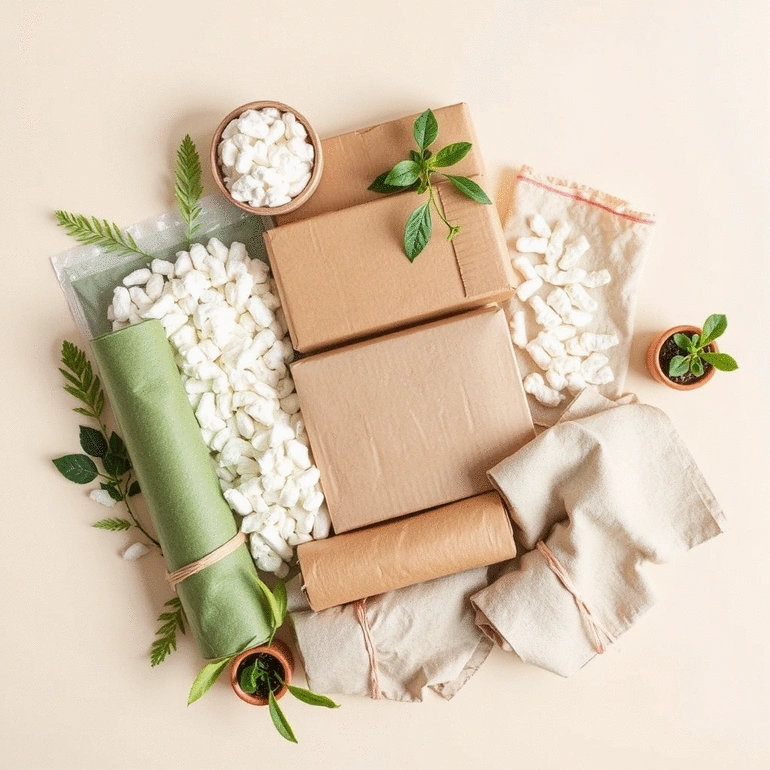
In a world where waste is a growing concern, the choices we make during a move can have a lasting impact on the environment. Opting for eco-friendly packing materials not only enhances your relocation experience but also contributes to a healthier planet. Let’s explore the key lessons you can take away from this essential approach to moving.
The comparison highlights the key differences between traditional packing materials and their eco-friendly counterparts, focusing on waste reduction, cost savings, and protection. For more in-depth information on how to choose environmentally responsible options, consider reading about sustainable packing options for moving.
These materials contribute to landfill overflow and take hundreds of years to decompose.
These materials help reduce waste and promote a healthier environment.
As someone who has navigated the moving process countless times, I can assure you that choosing eco-friendly packing materials is a vital part of making your move smoother and more sustainable. Not only does it help reduce waste, but it also contributes to a healthier planet. Think about it: every box and piece of tape you use has an impact, and making conscious choices can lead to a more environmentally friendly relocation.
When we pack our belongings, we often reach for traditional materials without realizing their environmental toll. From plastic bubble wrap to Styrofoam peanuts, these products can linger in landfills for centuries. By prioritizing sustainable alternatives, we can significantly lessen our carbon footprint and show respect for our environment.
Traditional packing materials, while effective, come with a hefty environmental price tag. For instance, many plastic products are made from non-renewable resources and contribute to pollution during their production. When discarded, they can take hundreds of years to decompose, which is not something we want to leave for future generations!
Every time we use these materials, we’re adding to a cycle of waste. It’s essential to consider how our choices affect the planet. By embracing eco-friendly options instead, we not only protect our environment but also encourage sustainable practices in our communities. For those in Sydney, you might also be interested in choosing rubbish removal in Sydney to further reduce your environmental impact.
The shift to sustainable packing supplies offers numerous benefits beyond just being kind to the Earth. These materials often provide better protection for your belongings while being easier on your wallet in the long run. And let’s be honest, who doesn’t love saving a little money?
At Move Smart AU, we’re all about making your moving experience not only smooth but also sustainable! Choosing eco-friendly packing supplies can make your relocation a positive experience for both you and the environment.
Now that we understand the importance of eco-friendly packing materials, let’s dive into some fantastic options available for your move. Each of these alternatives not only protects your belongings but also aligns with our mission of promoting sustainable practices.
Here's a brief recap of the key points discussed so far:
As we reflect on the journey of moving, the importance of making sustainable choices cannot be overstated. Eco-friendly packing materials not only lessen our environmental impact but also pave the way for a smoother transition. By choosing greener options, we contribute to a healthier planet while also enhancing our own moving experience! For more tips on reducing waste before your move, check out these declutter tips for moving in NSW.
Here are some key benefits of opting for eco-friendly packing materials:
As the founder of Move Smart AU, I believe that every small step counts! Making these choices reflects our commitment to an eco-conscious lifestyle, which I am passionate about promoting. Every time you pack with biodegradable peanuts or recycled boxes, you’re not just moving—you're also making a statement.
Now that we understand the benefits, it’s time to put thoughts into action! Here’s a simple checklist to guide you through an eco-friendly move:
This checklist can serve as your roadmap to a sustainable move. As a relocation expert, I often emphasize the importance of planning ahead. It not only makes the process easier but also brings peace of mind knowing you’re doing your part! You might also find our guide on eco-friendly decluttering for moving helpful.
To deepen your eco-friendly moving knowledge, I encourage you to explore local resources and community events:
At Move Smart AU, we’re dedicated to promoting eco-friendly practices and providing actionable insights. I believe that by staying informed and involved, we can all contribute to a more sustainable future. So let’s take these steps together for your next move!
Here is a quick recap of the important points discussed in the article:
We are dedicated to helping you achieve a stress-free and eco-friendly relocation across New South Wales. From decluttering to settling in, we provide expert guidance every step of the way!
